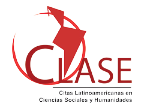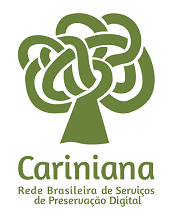Philosophy's mirror: Hegel's presence in Harris and Dewey classifications
DOI:
https://doi.org/10.5433/1981-8920.2019v24n3p104Keywords:
Knowledge Organization, Classification, ArtsAbstract
Introduction: Created in the nineteenth century, the Dewey Decimal Classification (DDC) carries in its unchanging hierarchical structure the thoughts of its time. Among the various sources that contributed to its conception, William Torrey Harris is recognized in the Knowledge Organization literature as Dewey's most immediate influence to create your system. The article published in 1959 by Graziano, points to hegelian’s thought as the true philosophical support of Harris’s scheme and, consequently, for Dewey Decimal Classification, questioning the place occupied for Bacon in this systems. Objectives: The purposes of this research were analyzes the philosophical influences that based the classification of Arts in Harris and Dewey schemes, remaking Graziano's steps, in order to check the plausibility of his statement and extend his discussion, making progress in the DDC theoretical studies. In this article, it is proposed to examine the understanding of Art that formed the classifications of Bacon, Hegel, Harris and Dewey. Methodology: The methodological approach adopted as background was the historical-structural dialectics, which was used in order to develop an explanatory and qualitative investigation, considering the analysis of four different classifications. Results: The results presented clearly indicate Hegel’s presence not explicitly assumed by Harris and Dewey in their systems and still little discussed in the representation information field in Brazil. Conclusions: It is concluded, unlike Graziano, that it is not possible to completely remove Baconian’s thought from the structure of Harris's bibliographic classification, however, the presence of Hegel really confirms itself as the feeder source of the Arts class content.Downloads
References
BACON, Francis. Novumorganum. 2002. Disponível em: http://www.ebooksbrasil. org/adobeebook/norganum.pdf . Acesso em: 11 jan. 2018.
______. O progresso do conhecimento. Tradução Raul Fiker. São Paulo: UNESP, 2007. Título original: The Proficience and Advancement of Learning Divine and Humane (1605).
BARBOSA, Alice Príncipe. Teoria e prática dos sistemas de classificação bibliográfica. Rio de Janeiro: Instituto Brasileiro de Bibliografia e Documentação, 1969. Obras Didáticas, 1.
BRAS, Gérard. Hegel e a arte: uma apresentação à Estética. Tradução de Maria Luiza X. de A. Borges. Rio de Janeiro: Jorge Zahar, 1990. (Textos de Erudição e Prazer).
DUARTE, Rodrigo. Do sistema das artes à ambiência pós-histórica: itinerários da estética contemporânea. Viso - Cadernos de estética aplicada: revista eletrônica de estética, v. 10, n. 19, jul./dez. 2016. Disponível em: http://www.revistaviso.com.br/pdf/Viso_19_Rodrigo Duarte.pdf. Acesso em: 12 jan. 2018.
EATON, Thelma. The development of classification in America. 1959. Disponível em: https://www.ideals.illinois.edu/bitstream/handle/2142/1474/Eaton830.pdf?sequence=2&isAllowed=y. Acesso em: 20 maio 2017.
FOSKETT, A. C. A abordagem temática da informação. São Paulo: Polígono; Brasília: Ed. Universidade de Brasília, 1973.
GRAZIANO, Eugene E. Hegel’s philosophy as basis for the Dewey Classification Schedule. Libri, v. 9, p. 45-52, 1959.
HARRIS, WM. T. Book classification. The Journal of Speculative Philosophy, St. Louis, v. IV, p. 114-128, 1870.
HEGEL, G. W. F. Curso de Estética: o Sistema das Artes. Tradução Álvaro Ribeiro. São Paulo: MartinsFontes, 1997. Título original: Vorlesungenüber die Ästhetik (1835).
KELLER, Phillip Wilhelm. Estrutura da obra de arte na filosofia de Hegel: análise da estrutura da arte nos cursos de Berlim com relação aos conceitos de organismo, ação e conceito. 2011. 129 p. Tese (Doutorado em Filosofia) – Faculdade de Filosofia, Letras e Ciências Humanas, Universidade de São Paulo, São Paulo, 2011. Disponível em: http://www.teses.usp.br/teses/disponiveis/8/8133/tde-17082012-104854/ptbr.php. Acesso em: 18 jan. 2018.
LA MONTAGNE, L. E. American library classification: with special reference to the Library of Congress. Handen: The Shoe String Press, 1961.
LEIDECKER, K. F. Yankee teacher: the life of William Torrey Harris. New York: The Philosophical Library, 1946.
MILLS, J. A morden outline of library classification. London: Chapman and Hall, 1960.
OLSON, Hope A. A potência do não percebido: Hegel, Dewey e seu lugar na corrente principal do pensamento classificatório. InCID: R. Ci. Inf. e Doc., Ribeirão Preto, v. 2, n. 1, p. 3-15, jan./jun. 2011. Disponível em: http://www.revistas.usp.br/incid/article/view/42331. Acessoem: 20 maio 2017.
______. Sameness and difference: a cultural foundation of classification. Library Resources&Technical Services, Chicago, v. 45, n. 3, p. 115-122, jul. 2001. Disponível em: http://polaris.gseis.ucla.edu/gleazer/462_readings/olson_2001.pdf. Acesso em: 20 maio 2017.
PIEDADE, M. A. Requião. Introdução à Teoria da Classificação. 2. ed. rev. e aum. Rio de Janeiro: Interciência, 1983.
POMBO, Olga. O enciclopedismo romântico: Novalis e Hegel. Lisboa, 2002. Disponível em: http://www.educ.fc.ul.pt/hyper/enc/cap3p7/romantico.htm. Acesso em: 13 jan. 2018.
ROSSI, Paolo. Francis Bacon: da magia à ciência. Tradução Aurora Bernardini. Londrina: Eduel; Curitiba: UFPR, 2006.
SALES, Rodrigo de; PIRES, Thiago Blanch. The classification of Harris: influences of Bacon and Hegel in the universe of library classification. VI North American Symposium on Knowledge Organization (NASKO, 2017). Proceedings… Champaign, IL. Universityof Illinois, 2017. Disponível em: http://www.iskocus.org/NASKO2017papers/NASKO2017_ paper_5.pdf. Acesso em: 16 ago. 2017.
SANTORO, Fernando. Sobre a estética de Aristóteles. Viso: Cadernos de estética aplicada, v. 1, n. 2, p. 1-13, maio/ago. 2007. Disponível em: http://revistaviso.com.br/visArtigo.asp? sArti=12. Acesso em: 31 maio 2018.
SAYERS, W. C. B. An introduction to library classification. 9. ed. Londres: Grafton, 1955.
SHIRAYAMA, Cristiane de Melo. Francis Bacon e O Progresso do Conhecimento no Início do Século XVII. 2016. 89 p. Dissertação (Mestrado em Filosofia) – Escola de Artes, Ciências e Humanidades, Universidade de São Paulo, São Paulo, 2016. Disponível em: http://www.teses.usp.br/teses/disponiveis/100/100135/tde-10102016-182510/en.php. Acesso em: 18 jan. 2018.
SIQUEIRA, Jéssica Câmara. O conceito classificação: uma abordagem histórica e epistemológica. Revista Brasileira de Biblioteconomia e Documentação, Nova Série. São Paulo, v. 6, n. 1, p. 37-49, jan./jul. 2010.
VICKERY, Brian C. Classificação e indexação nas ciências. Rio de Janeiro: BNG/Brasilart, 1980. Tradução de M.C.G. Pirolla.
WIEGAND, Wayne A. The “Amherst Method”: the origins of the Dewey Decimal Classification Scheme. Libraries&Culture, v. 32, n. 2, p. 175-194, spring 1998.
Downloads
Published
How to Cite
Issue
Section
License
A revista se reserva o direito de efetuar, nos originais, alterações de ordem normativa, ortográfica e gramatical, com vistas a manter o padrão culto da língua e a credibilidade do veículo. Respeitará, no entanto, o estilo de escrever dos autores. Alterações, correções ou sugestões de ordem conceitual serão encaminhadas aos autores, quando necessário.
O conteúdo dos textos e a citação e uso de imagens submetidas são de inteira responsabilidade dos autores.
Em todas as citações posteriores, deverá ser consignada a fonte original de publicação, no caso a Informação & Informação.












